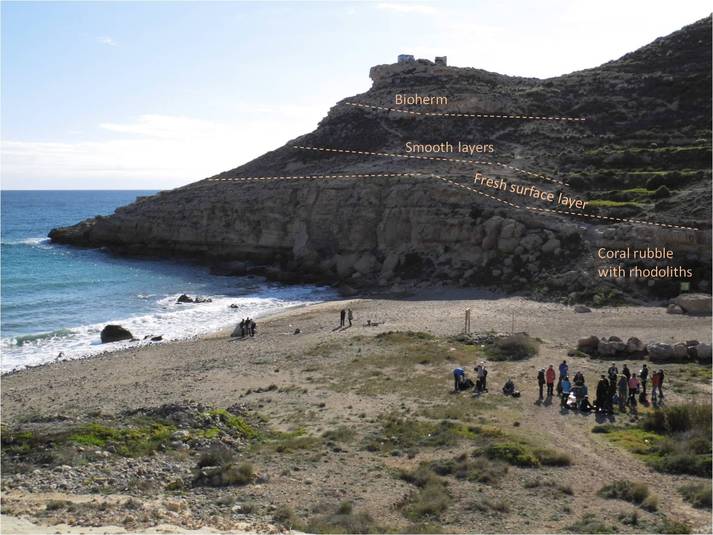Environmental Geology in Spain - Geological structures
18.02.2016
Newsfeed of the day
Geological structures: rocks and sediment
by Maya Schmitt
Photo credit: Katrin Kleemann
Cala del Cuervo which is shown below is a setting for learners of geology at the LMU because it allows them to discover a variety of landscape impacts and untold stories.
Mapping out the panorama from the opposite hill, we identified four sedimentary rock layers according to their appearance. We then moved closer to the hill to analyse grain size, colour and any special features. One basic principle of geology (Überlagerunsprinzip) entails that rocks or sediment covering other rocks are younger than those beneath them. Therefore, rocks tell the story of evolution in a concentrated area in time.
Here, we identified four layers (bottom to top):
1. Coral rubble with rhodoliths: a hard layer with coral fragments and red algae colonies. These even still exist today.
2. Fresh surface layer: layered sedimentary strata, fewer coral and fossil fragments, rough, beige, thickness 5m
3. Smooth layers: light beige with coarse coral fragments followed by white-yellowish rock flour.
This structure is repeated three times in succession.
4. Bioherm: coral patch consisting of marine organisms such as algae, oysters and stromatolites
Based on our observations we can, for example, determine that landslides caused by storms and earthquakes carried masses of land (mostly from deep waters) that contained pieces of coral and volcanic rock. Depending on where we find these fragments they can give us an idea of how old they are and where they came from. While this is not always accurate it raises fascinating thoughts about the age and composition of our environment.


